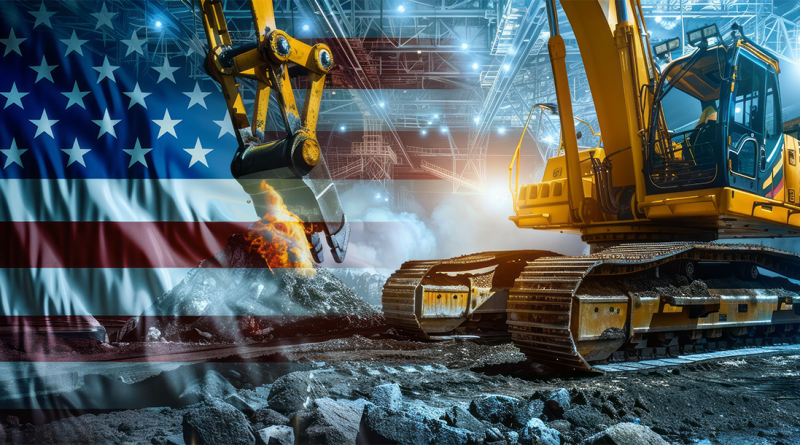US Miners Push for Washington’s Support
The United States mining industry stands at a critical juncture, facing numerous challenges that hinder its growth and sustainability. Amidst regulatory hurdles, environmental concerns, and a shrinking workforce, industry leaders are calling for a revival of the long-dormant Bureau of Mines. This push aims to reestablish a dedicated federal body to spearhead research, improve safety standards, and drive technological advancements. As the debate intensifies, both supporters and opponents present compelling arguments on the future of mining in America.
Historical Context of the Bureau of Mines
Established in 1910, the Bureau of Mines was created to address the dire need for enhanced safety, efficiency, and sustainability in the mining industry. Its primary mandate was to conduct research, promote technological innovation, and ensure the well-being of miners. Over the years, the Bureau made significant strides in reducing mining accidents, developing new mining methods, and advancing metallurgical processes. Its contributions were pivotal in transforming the industry and setting global standards.
However, in 1996, the Bureau was disbanded, and its responsibilities were dispersed among other agencies, such as the U.S. Geological Survey (USGS) and the National Institute for Occupational Safety and Health (NIOSH). This decision was driven by budget constraints and a shift in federal priorities. The closure left a void in dedicated mining research and development, which industry leaders argue has stymied progress and innovation.
Current Challenges in the Mining Industry
Today’s mining industry faces a myriad of challenges that threaten its viability and growth. Regulatory hurdles are among the most pressing issues. Stringent environmental regulations and lengthy permitting processes often delay projects and escalate costs. While these regulations are essential for protecting the environment, they can also stifle innovation and deter investment.
Environmental concerns continue to dominate the discourse around mining activities. The industry is under constant scrutiny for its impact on land, water, and air quality. Issues such as soil erosion, water contamination, and habitat destruction are frequently cited by environmental groups and communities. These concerns necessitate the development of more sustainable mining practices and robust mitigation strategies.
The workforce shortage is another critical challenge. The mining sector struggles to attract and retain skilled labor, resulting in operational inefficiencies and increased safety risks. The aging workforce and the perception of mining as a hazardous occupation further exacerbate this issue. Additionally, the lack of a dedicated federal body to lead research and development efforts has resulted in technological gaps that hinder the adoption of modern, efficient, and safe mining practices.
Arguments for Reviving the Bureau of Mines
Proponents of reviving the Bureau of Mines argue that it would bring numerous benefits to the industry and the nation. One of the primary advantages is the potential for groundbreaking research and development. A dedicated bureau would focus on advancing mining technologies, improving safety standards, and finding innovative solutions to environmental challenges. This focus could lead to significant improvements in mining efficiency and worker safety, ultimately enhancing the industry’s competitiveness on a global scale.
Economic benefits are also a key consideration. Reviving the Bureau could stimulate economic growth by boosting mining operations, creating jobs, and generating revenue. The mining sector is a vital component of the U.S. economy, contributing to the production of essential materials for various industries. A revitalized Bureau could help unlock new resources, promote sustainable practices, and drive technological advancements that benefit the broader economy.
Environmental management is another critical area where the Bureau could make a substantial impact. By developing and promoting best practices for sustainable mining, the Bureau could help mitigate the environmental footprint of mining activities. This approach would address the concerns of environmental groups and communities, fostering a more balanced and responsible mining industry.
Industry leaders and policymakers have expressed strong support for the revival of the Bureau. They argue that a centralized body dedicated to mining would provide the necessary expertise, coordination, and oversight to tackle the industry’s unique challenges. This support underscores the importance of having a specialized agency to lead efforts in research, safety, and technological advancement.
Opposition and Counterarguments
Despite the compelling arguments for reviving the Bureau of Mines, there are notable objections. Budget concerns are at the forefront of the opposition. Critics argue that reestablishing the Bureau would require significant federal funding, which could be allocated to other pressing needs. They contend that the government should focus on optimizing existing resources rather than creating new bureaucratic structures.
Redundancy is another concern raised by opponents. They point out that the functions of the Bureau are already being performed by agencies like the USGS and NIOSH. Adding another layer of bureaucracy could lead to inefficiencies and duplication of efforts. Instead, critics suggest enhancing the capabilities of existing agencies to address the industry’s needs.
Environmental impacts are also a point of contention. Opponents worry that increased mining activity resulting from the Bureau’s revival could lead to greater environmental degradation. They argue that the focus should be on transitioning to more sustainable and less environmentally damaging industries, rather than bolstering mining operations.
The debate over reviving the Bureau of Mines reflects the broader challenges and opportunities facing the U.S. mining industry. While proponents highlight the potential for economic growth, technological advancement, and improved safety, opponents raise valid concerns about budget constraints, redundancy, and environmental impacts. As the industry navigates these complex issues, the future of the Bureau of Mines remains uncertain. However, the ongoing discussion underscores the critical need for innovative solutions and dedicated leadership to ensure the sustainable and prosperous future of mining in America.
